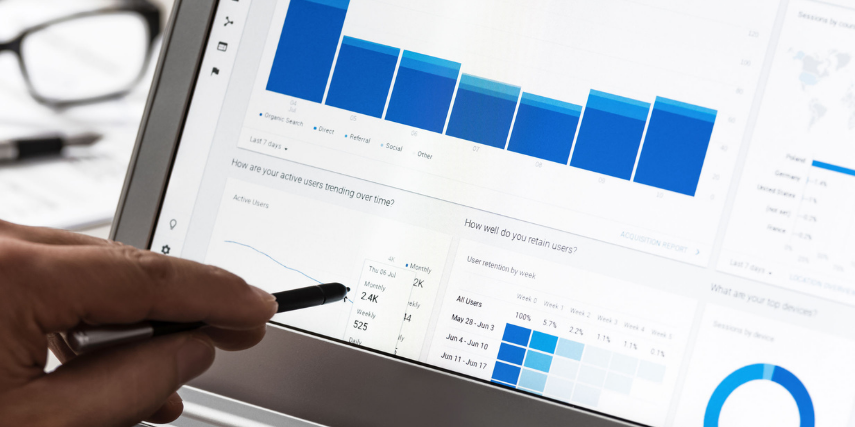If you’re the kind of person that gets sort of jazzed to pull out the vacuum attachments, if you get a little thrill as the W-2’s start appearing in your mailbox in January, if you can’t resist a little dance when it’s time to untangle Christmas lights or clean out your gutters, just wait until you see the fun in store for you.
It’s Google Analytics. It’s practically a theme park inside a carnival for those who love to organize socks, prep their tax return or dust mini blinds.
The thing about Google Analytics is … well, it’s that super-important kind of detail-oriented stuff that’s hard to get excited about, but nobody is willing to go so far as to say it’s not worth the time and effort.
Just like staring down a wall of mini-blind-clad windows, the problem with Google Analytics is the sheer number of metrics at your disposal. It’s not that you don’t need them; it’s just that you don’t know where to start.
Why It’s Worth It
Just on the off chance that none of the descriptions above fit you, and you’re more the type to put off detailed analysis, here are a few examples of why investing time in Google Analytics pays off by providing key insights into your marketing plan:
- Google Analytics can help you determine whether you’re effectively distributing your social media marketing budget by telling you on which platforms your target audience spends the most time.
- Google Analytics tells you the time of day that your audience is most likely to open your e-newsletter.
- You may find out that your target audience is a little older than you had thought, and it might be time to stop including phrases like, “I’m so jelly,” and mocking VSCO girls. You know what, never mind … mock away.
Marketing can feel a bit like throwing darts while wearing a blindfold, but Google Analytics is like taking off that blindfold and walking three steps closer to the bull’s-eye.
You’ll also have numbers to back up your investment in marketing. When your CEO wants to know whether digital marketing is delivering results, you’ll be able to produce solid support for your strategy.
The Key Metrics
Google Analytics is likely your only responsibility, so you can spend days, or even weeks, sifting through those metrics to see what matters, right?
Okay, maybe not. Because you probably have good reasons to put off using analytics altogether, take a look at the short list of metrics most likely to give you good insight into how your marketing strategy is performing:
Social Media: Find out whether social media platforms effectively deliver traffic to your website. Choose Acquisition on the menu, followed by Social and then Network Referrals. This will produce a ranking of social media platforms and the number of visitors arriving at your site from there.
Digital Advertising: Google Analytics provides great insights on digital advertising. For instance, you can find out detailed demographic information, so you aren’t beginning an ad with “Yo, Dude,” to an audience that’s made up of grandmothers in their 70s. You can also find out which types of ads are most effective at delivering visitors to your site. Maybe your Facebook ad is receiving decent attention, but it’s really Instagram that delivers. These kinds of insights can help you make important decisions about how you allocate your marketing budget.
You can also get insights into what types of devices are most effectively featuring your ad. You’ll be able to find out whether users are more likely to visit your site from a smartphone or a laptop. When you view this metric on Google Analytics, you can see the importance of a mobile-first strategy in directing your target audience to your site.
Email Marketing: Google Analytics can give you insights into which emails are most effective at encouraging audiences to visit your site. Maybe putting a certain word in your subject line guarantees engagement, or perhaps humor makes all the difference in your click-through rate. You may get the highest number of visitors to your site when your email includes an image.
There are also helpful metrics that tell you the ideal number of emails you should be sending for different subsets of your target audience. For instance, if you have a first-time customer making a purchase, you won’t want to flood them with thank-you emails over the next two days while also sending them promotional emails. Unless, of course, you prefer to have only one-time customers.
Once someone has visited your site through a digital ad, an email or a social media post, you can access the Users Flow report to learn some great insights. For instance, you can get information about at what point you tend to lose visitors from social media. Is it immediately after arriving on your landing page? Or do they check out a blog or two, then fall away once they look at your product page?
These details help you gain important information about a landing page that isn’t doing what you intended or adding a new call to action that encourages better engagement.
Google Analytics: it may not be for the thrill-seekers, the party people in your house. It’s not for everyone. Unless you count the people who want to drive growth, deliver a positive return on investment for their marketing plans, and use strategic methods to make more money.
Oh, right. That is everyone. And our team loves to talk about your metrics and how they can help you achieve the results you are looking for. Let’s talk soon!


